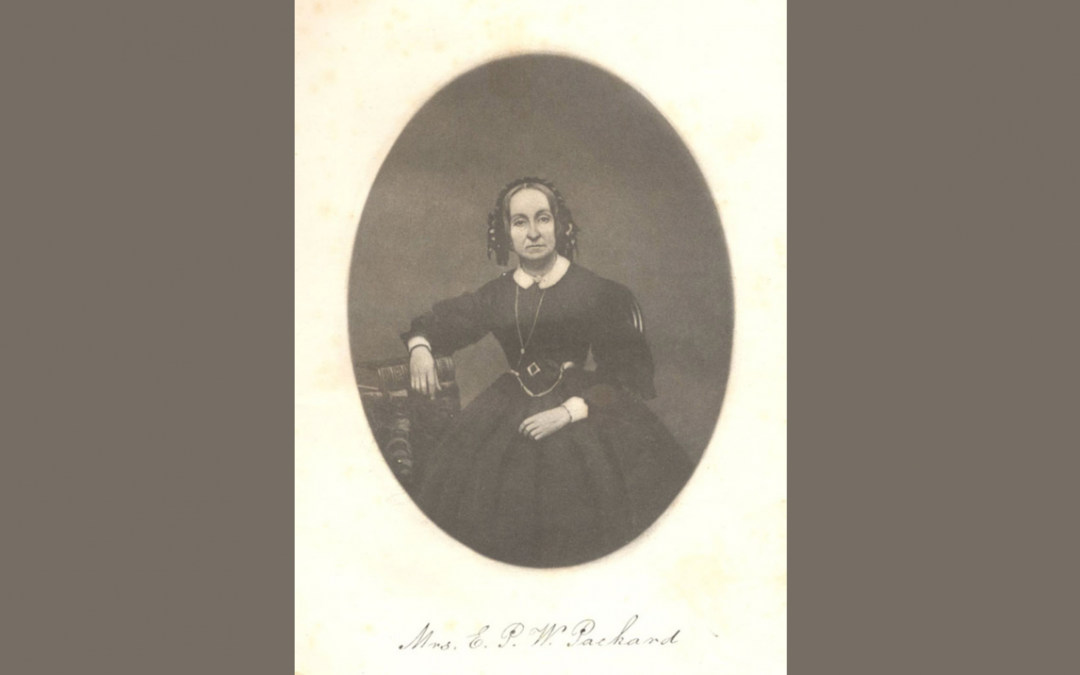by
_____
There was a time when a husband who disagreed with his wife could settle the matter by having her locked up in an insane asylum.
That actually happened to many women, including the intrepid, outspoken Elizabeth Packard, whose harrowing story is told in a new book by Kate Moore, The Women They Could Not Silence: One Woman, Her Incredible Fight for Freedom, and the Men Who Tried to Make Her Disappear.
Packard was a housewife and mother of six in Kankakee County, Illinois. She and her husband Theophilus had some differences of opinion — mostly having to do with their religious beliefs and the question of slavery — he disapproved of her support for abolitionist John Brown.
One summer morning in 1860, two men sent by her husband entered her home, kidnapped her, and put her on a train headed for the Jacksonville Insane Asylum.
Her husband was able to commit her based on his view that she seemed “slightly insane.”
It took Packard three years to escape, partly because she repeatedly refused to sign a document conceding that she was insane or change her views. Much of that time she spent on a ward for the violent and hopelessly insane.
Finally, due to pressure from her children, the doctors declared her “incurable” and discharged her.
But the story doesn’t end there.
The story doesn’t end there. When she got back home, her husband locked her in the nursery and nailed the windows shut.
When she got back home in 1864, her husband locked her in the nursery and nailed the windows shut. After a month and a half, she managed to drop a letter out the window calling for help. The letter reached a judge, who scheduled a jury trial to determine her sanity.
The trial lasted only five days — in the end the jury declared Packard legally sane and she was free.
She became a national celebrity, publishing articles and books and criss-crossing the country on a reform campaign, speaking out against the overweening power of insane asylums, and also for married women’s rights and freedom of speech.
Elizabeth petitioned the Illinois and Massachusetts legislatures to revise their insanity laws. You can read her 1867 address to the Illinois legislature, “They Claim That I am Insane,” here.
As she told the legislators: “Is it not time for you to legislate on this subject, by enacting laws which shall make it a crime to treat an Illinois citizen as an insane person simply for the utterance of opinions, no matter how absurd those opinions may be to others?”
“Is it not time for you to legislate on this subject, by enacting laws which shall make it a crime to treat an Illinois citizen as an insane person simply for the utterance of opinions, no matter how absurd those opinions may be to others?”
Nearly two decades later, a similar campaign was waged in England by reformers Louisa Lowe and Georgina Weldon. Both were certified as insane and threatened with incarceration for their so called “eccentric” behavior — and they used their public voices to give speeches and write about the need to reform the Lunacy Laws.
Packard wrote articles and books, lectured and lobbied for the rest of her life for the rights of married women and people locked up in mental wards.
Due to her advocacy, 34 bills were passed in various state legislatures, including an 1869 law passed by the state of Illinois that required a jury trial before a person could be committed to an asylum. Packard also influenced the founding of the National Society for the Protection of the Insane and the Prevention of Insanity in 1880.
Her campaigns for married women’s rights led to legislation allowing them equal rights to property, earnings, and custody of their children.
Packard died in Chicago in 1897. Though not legally divorced, she never returned to her husband.
© Copyright 2021
________________________________
Want to talk? Reach me at dana@danarubin.com




